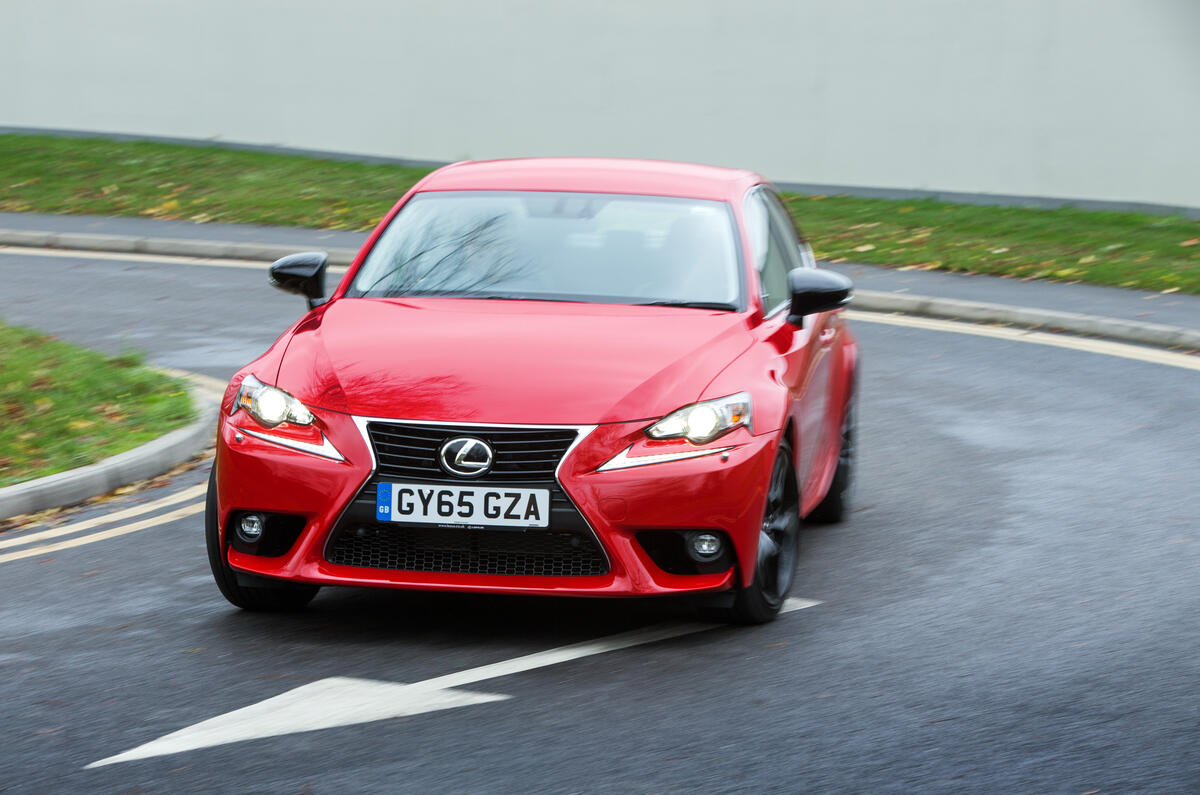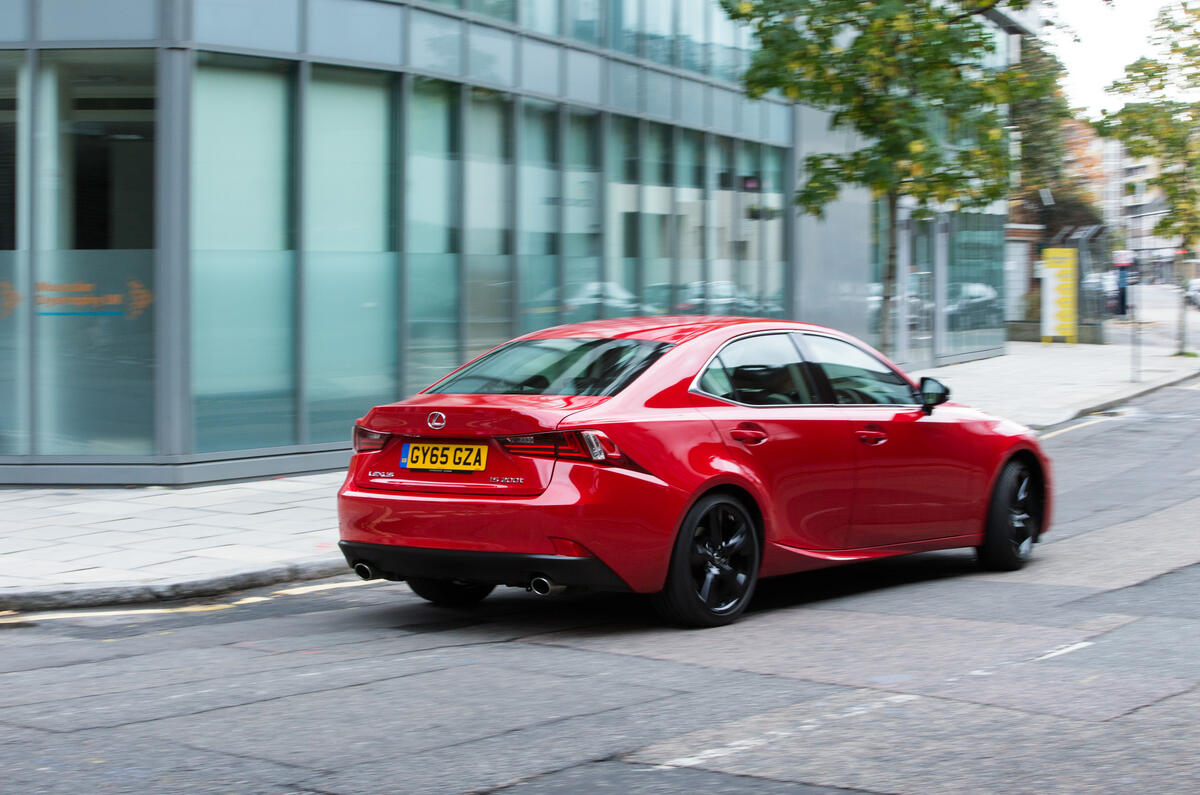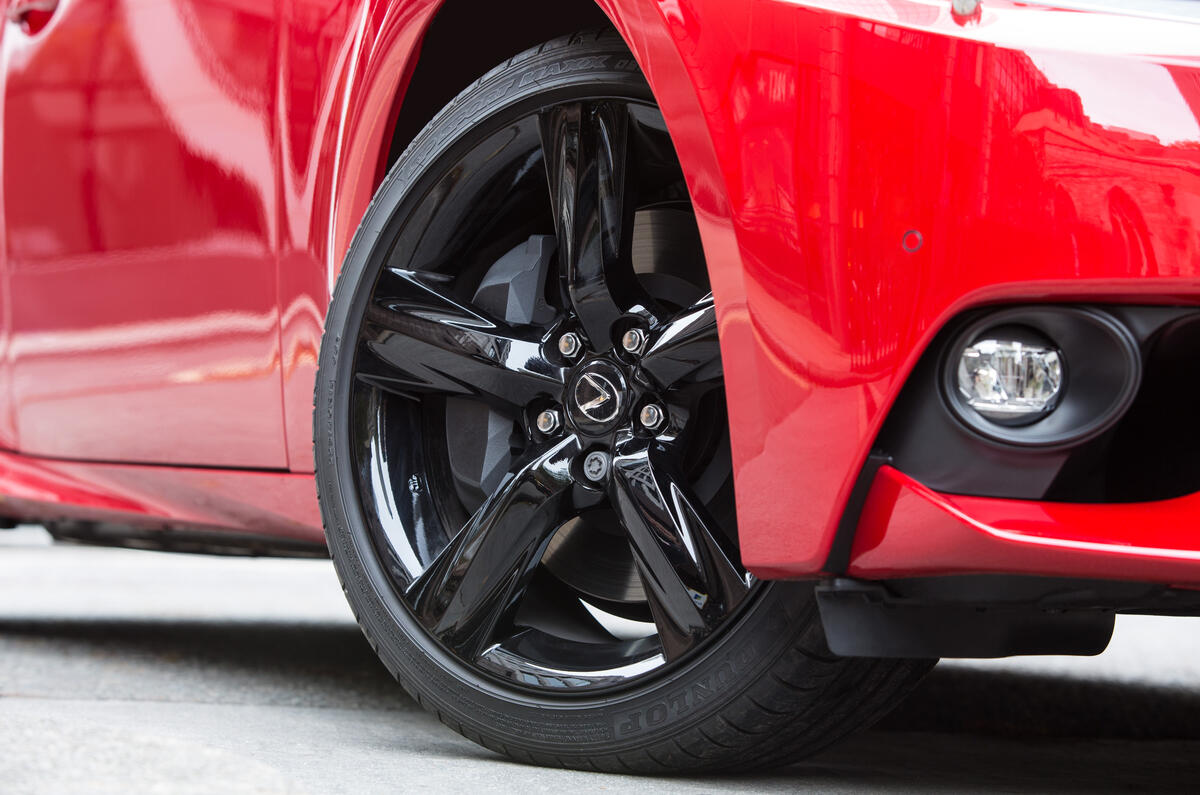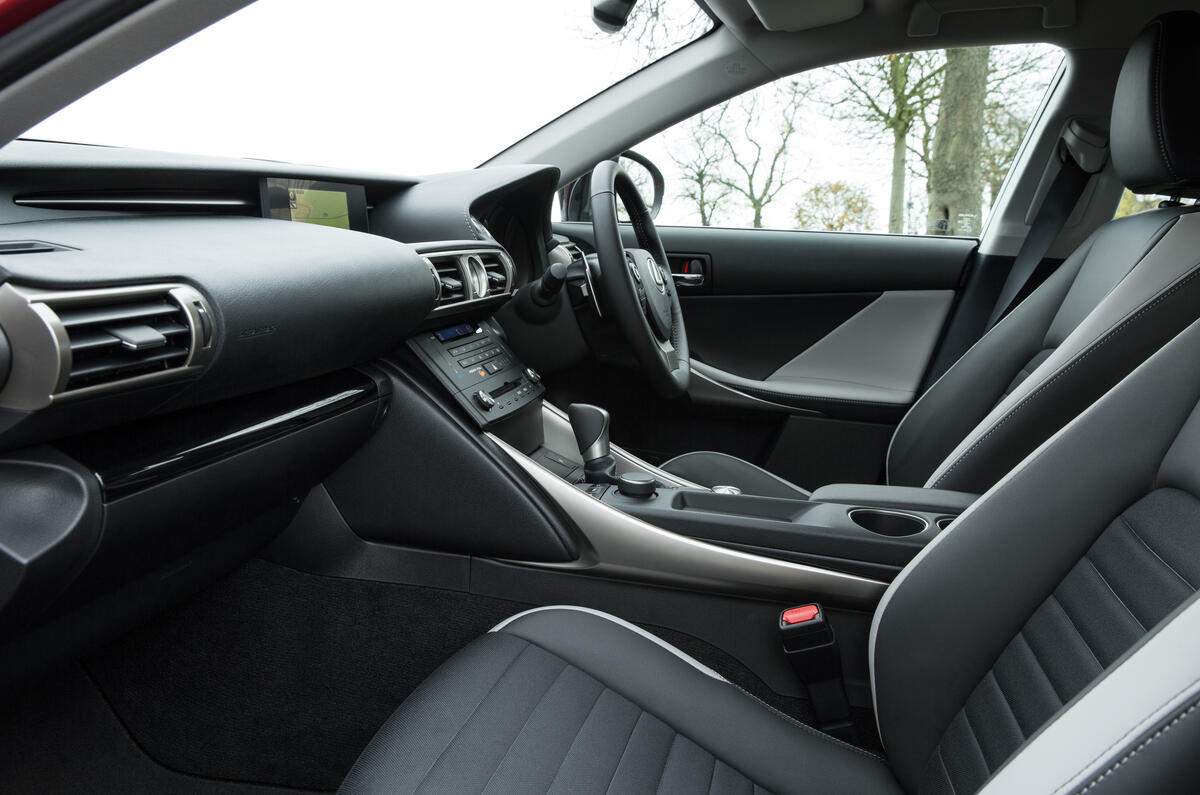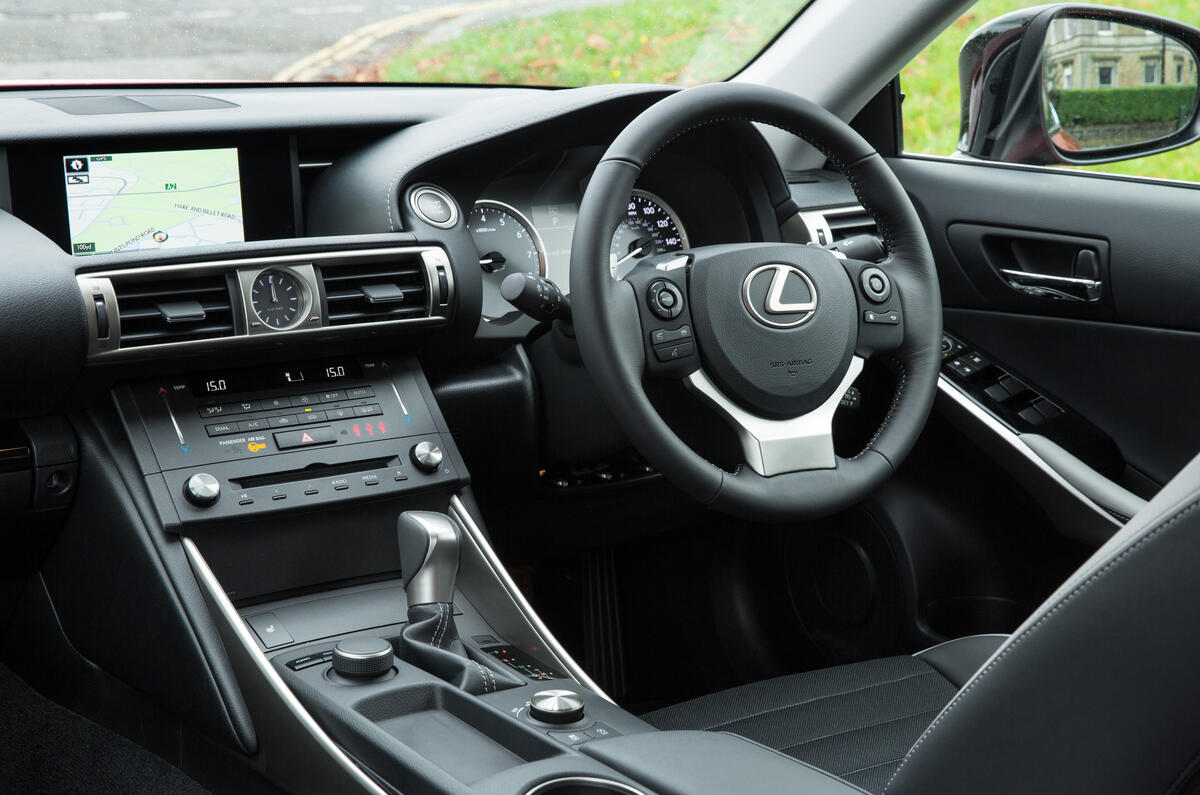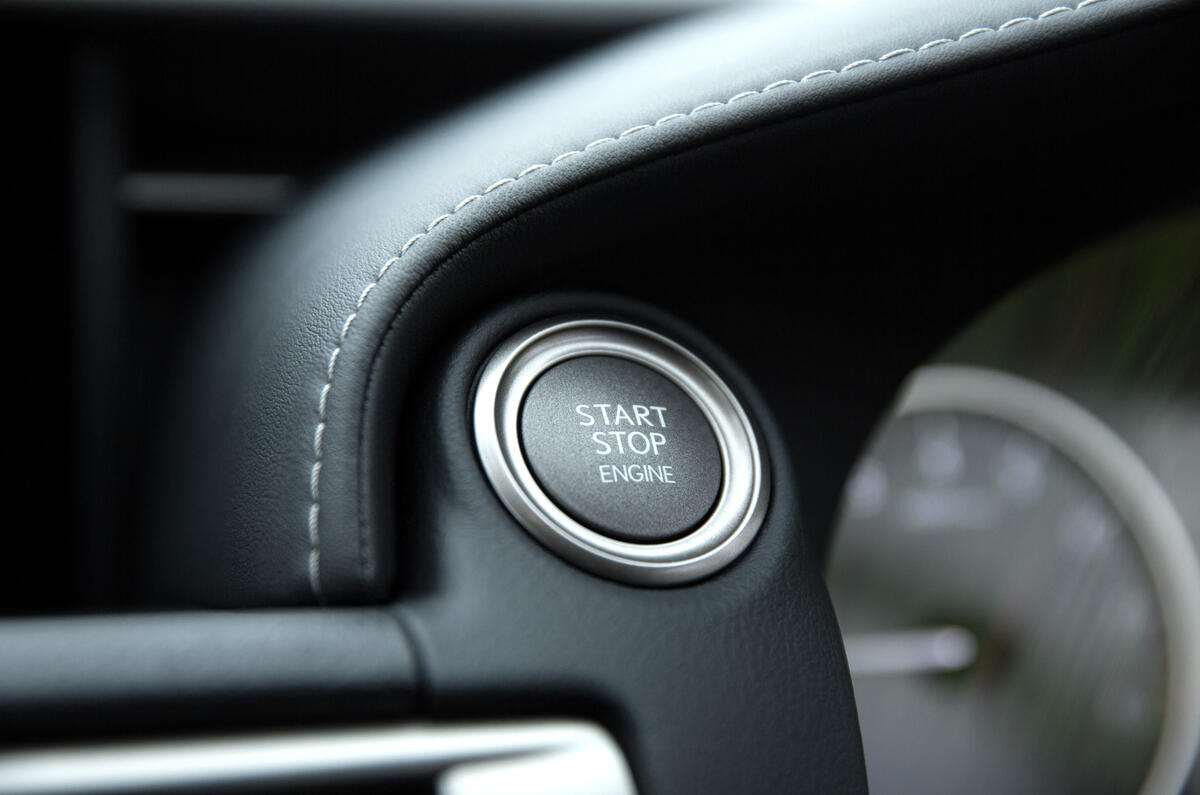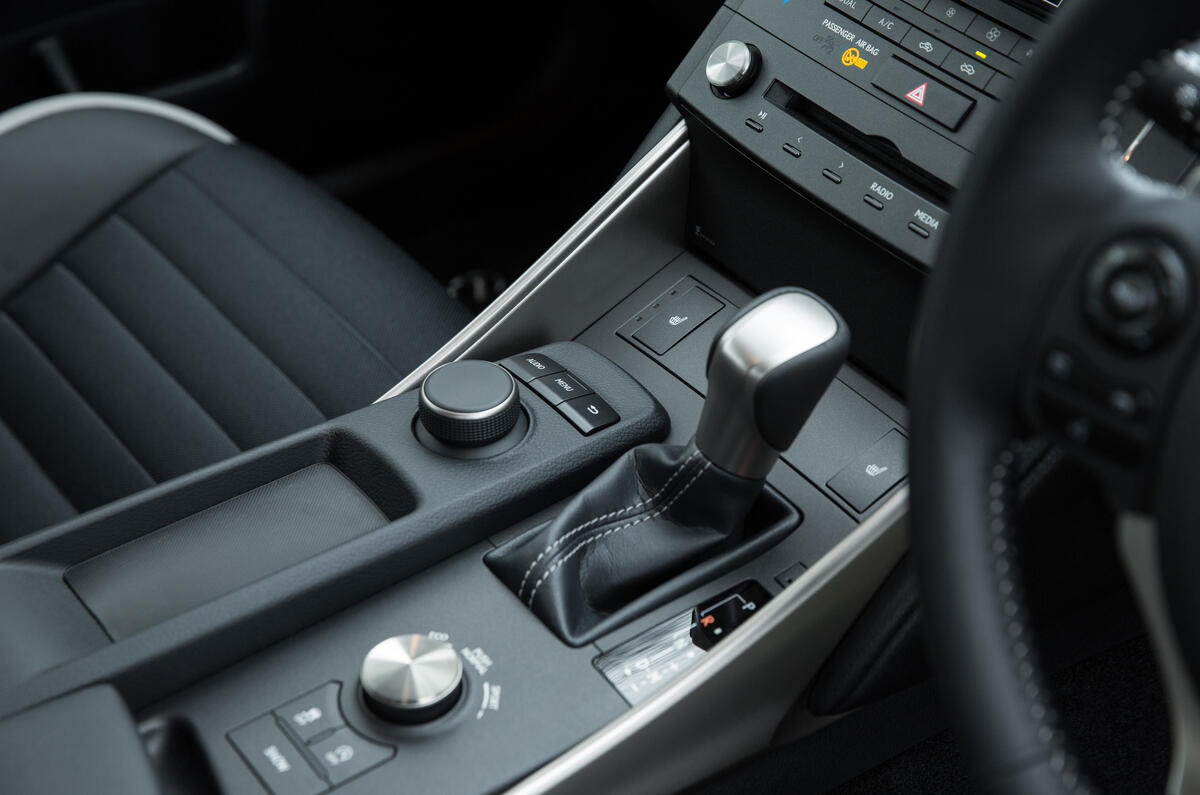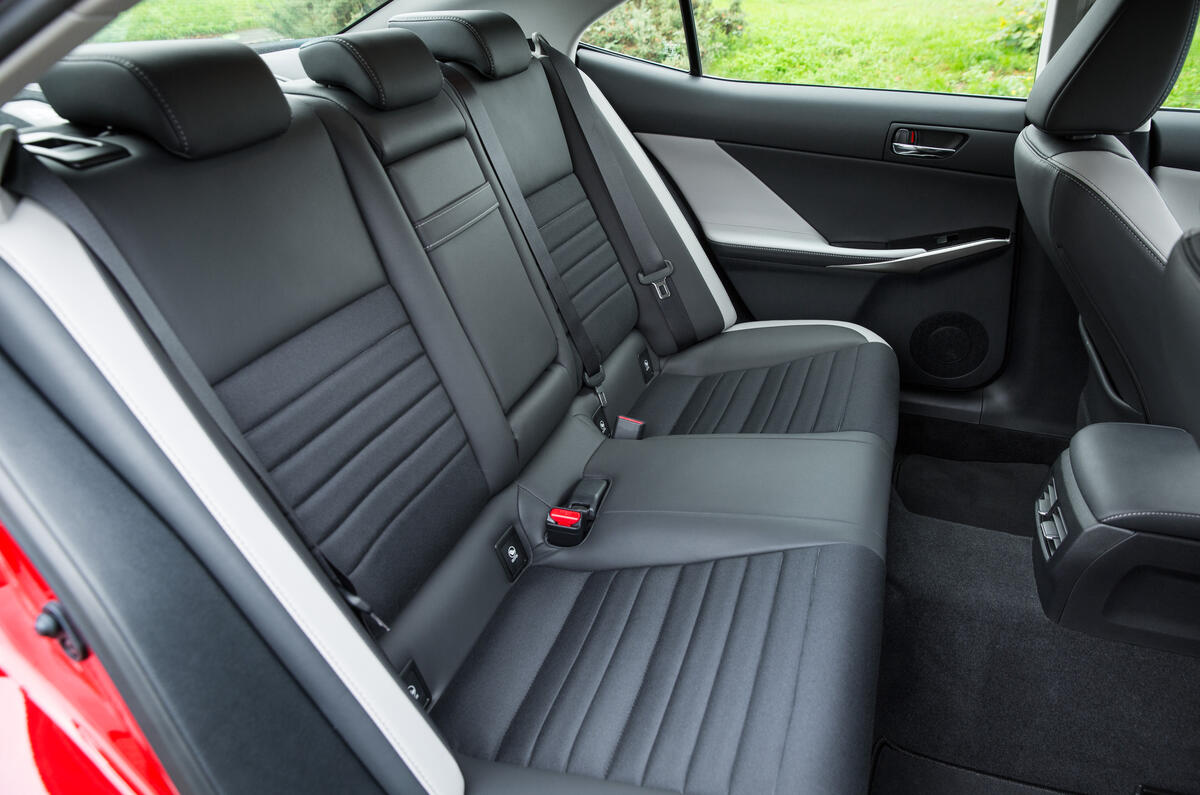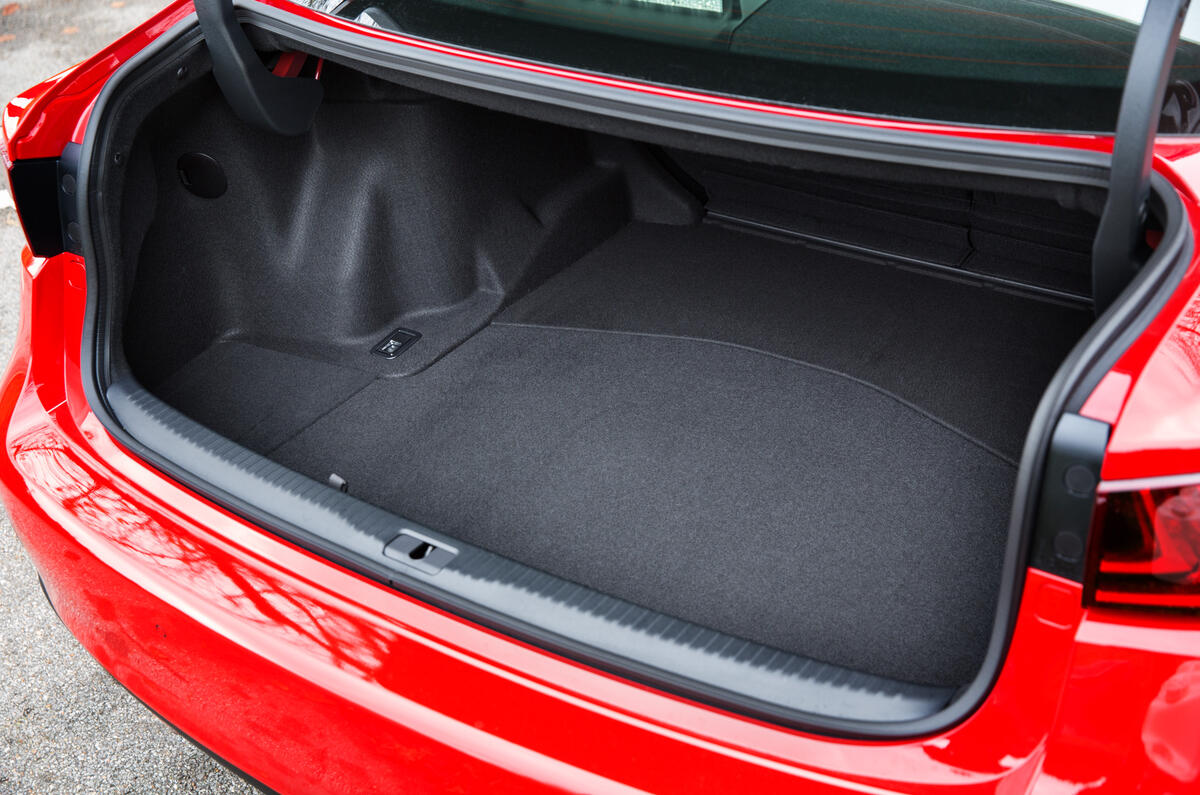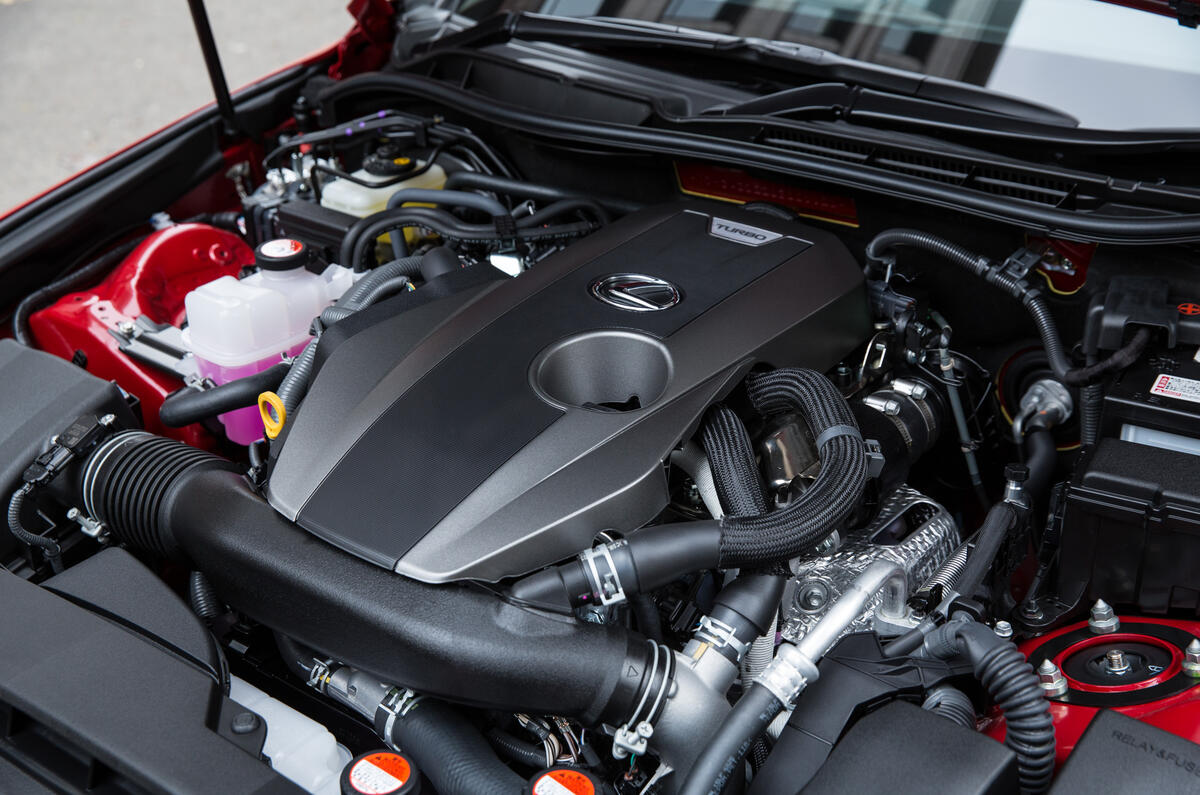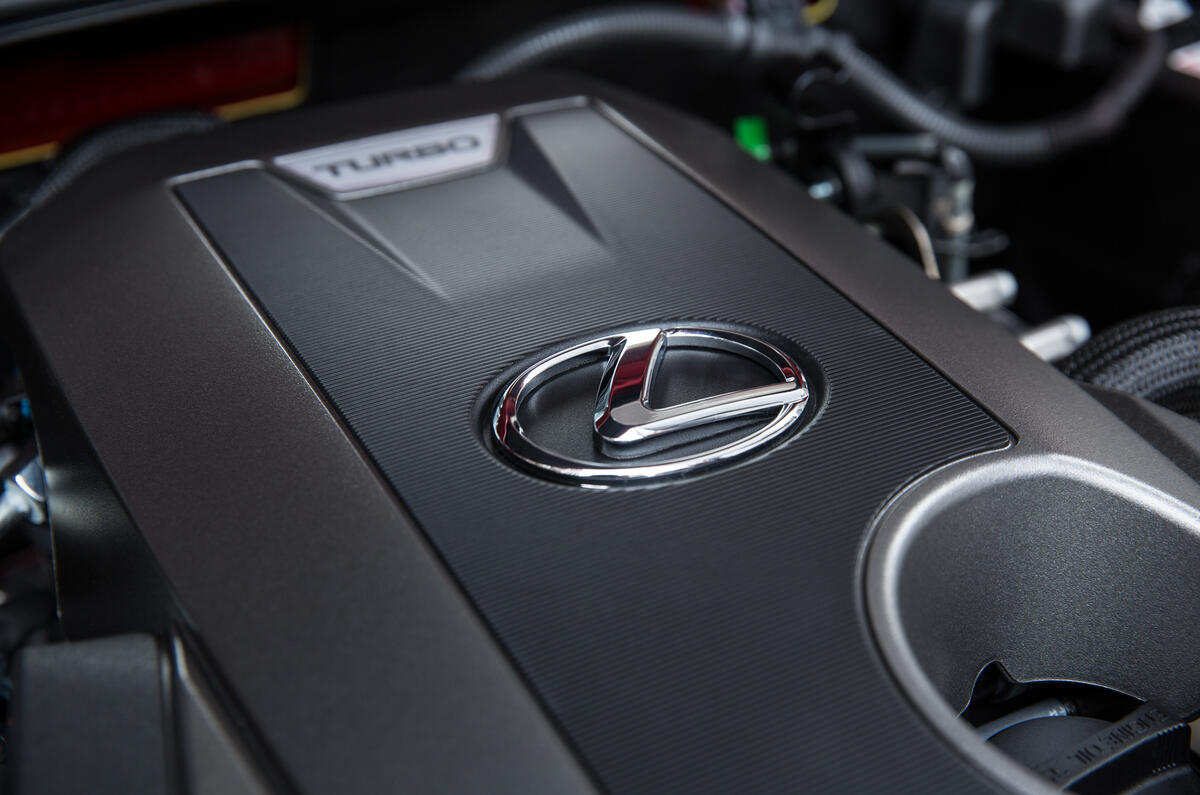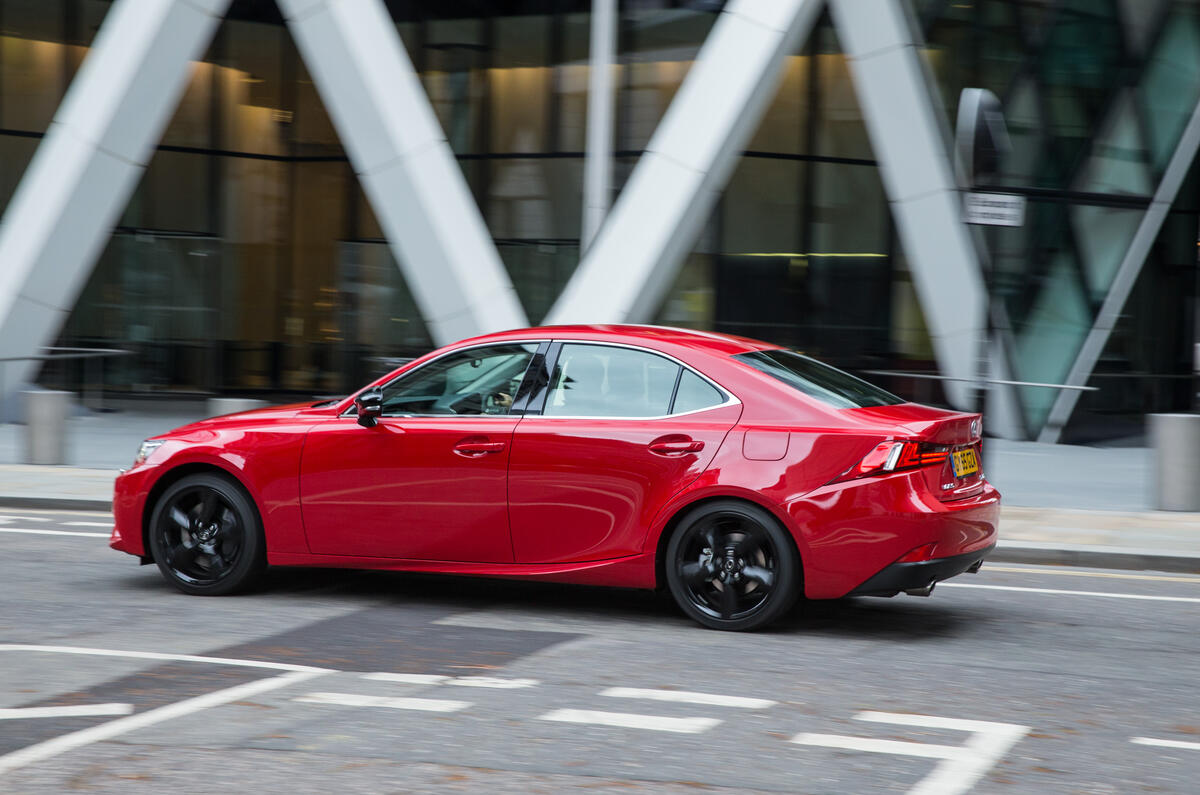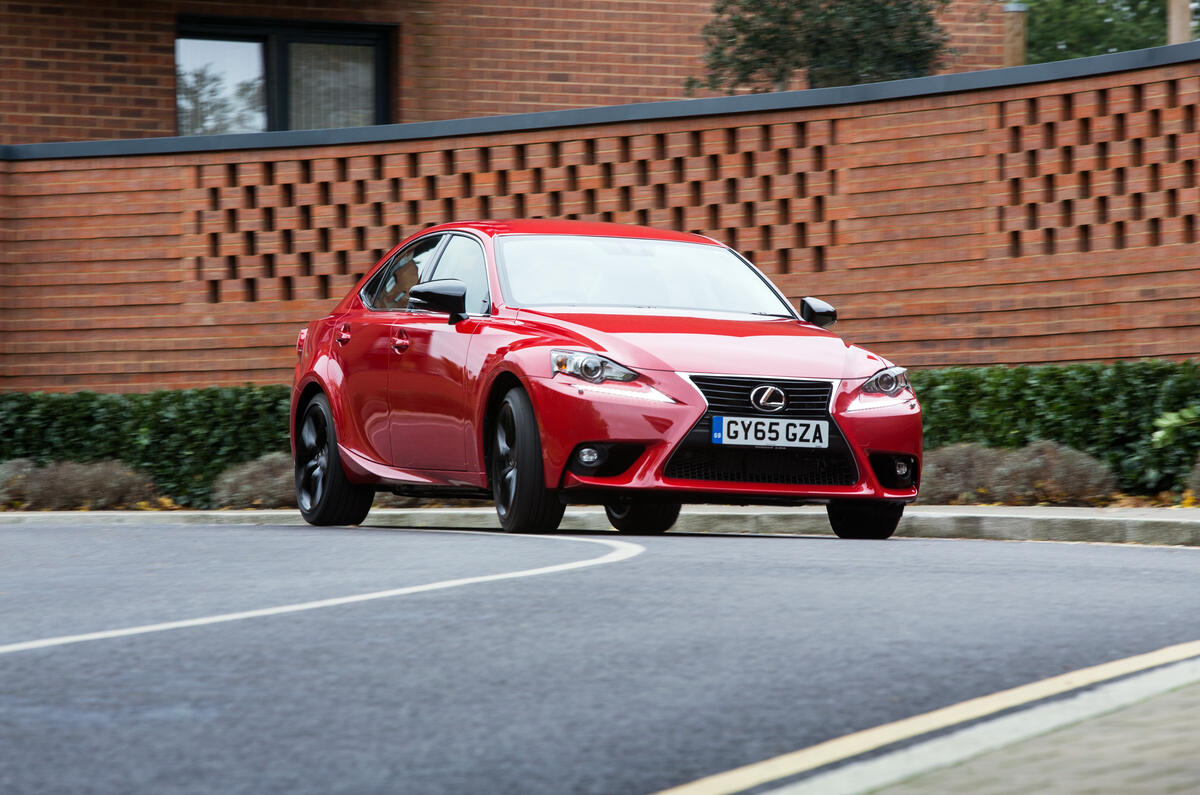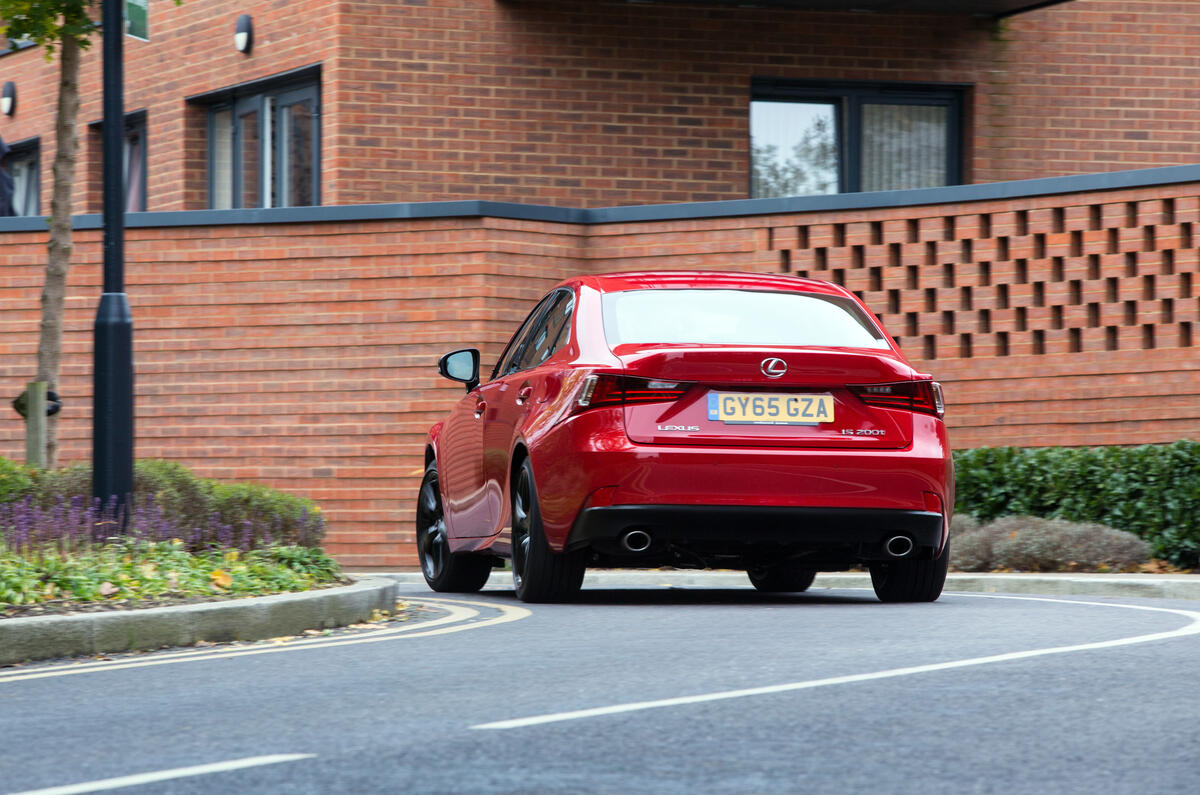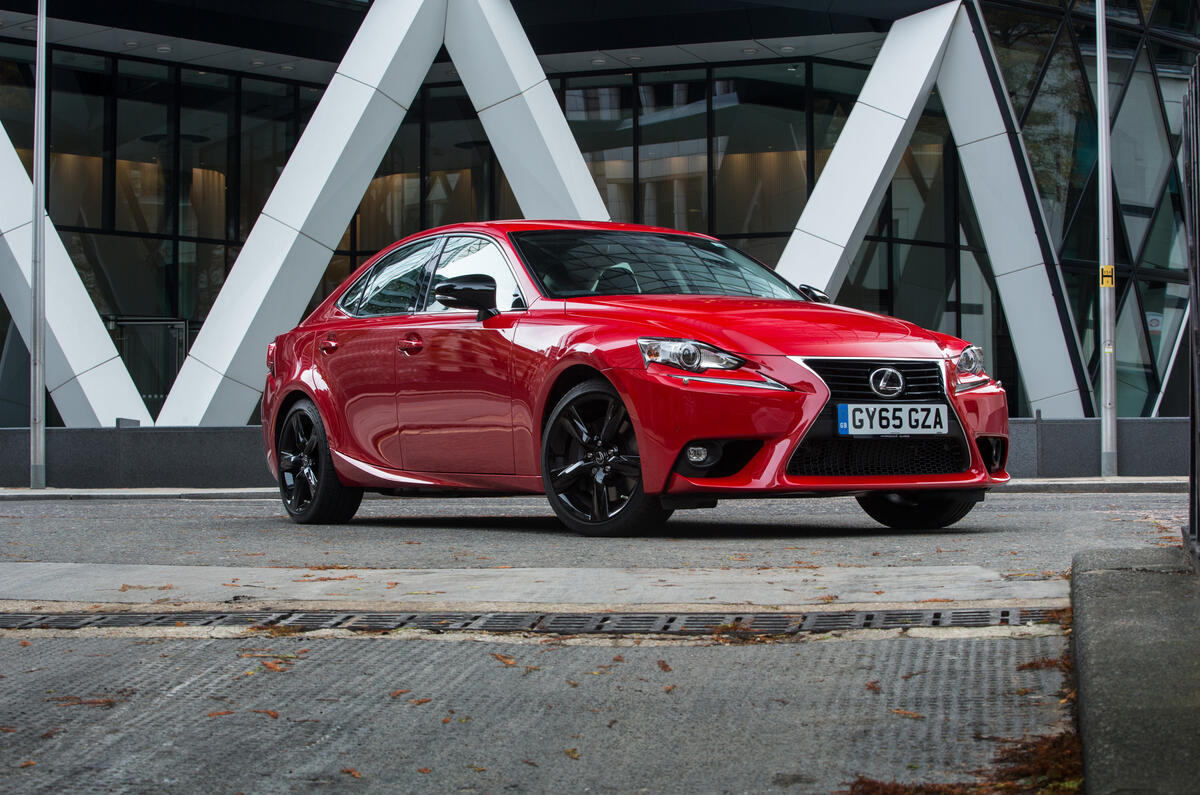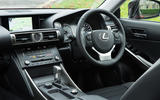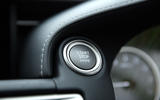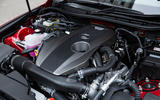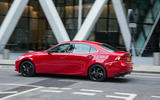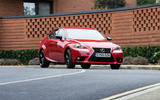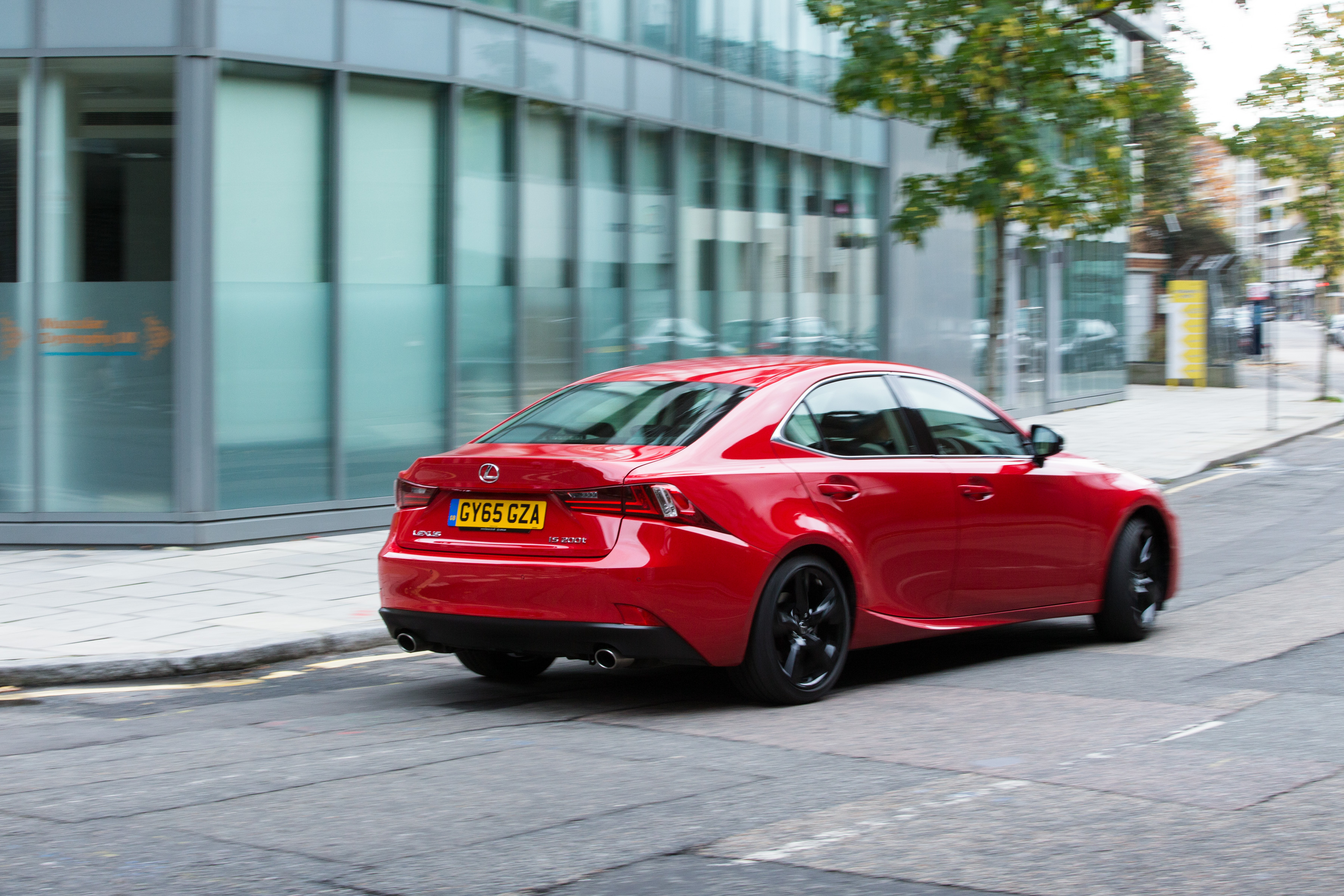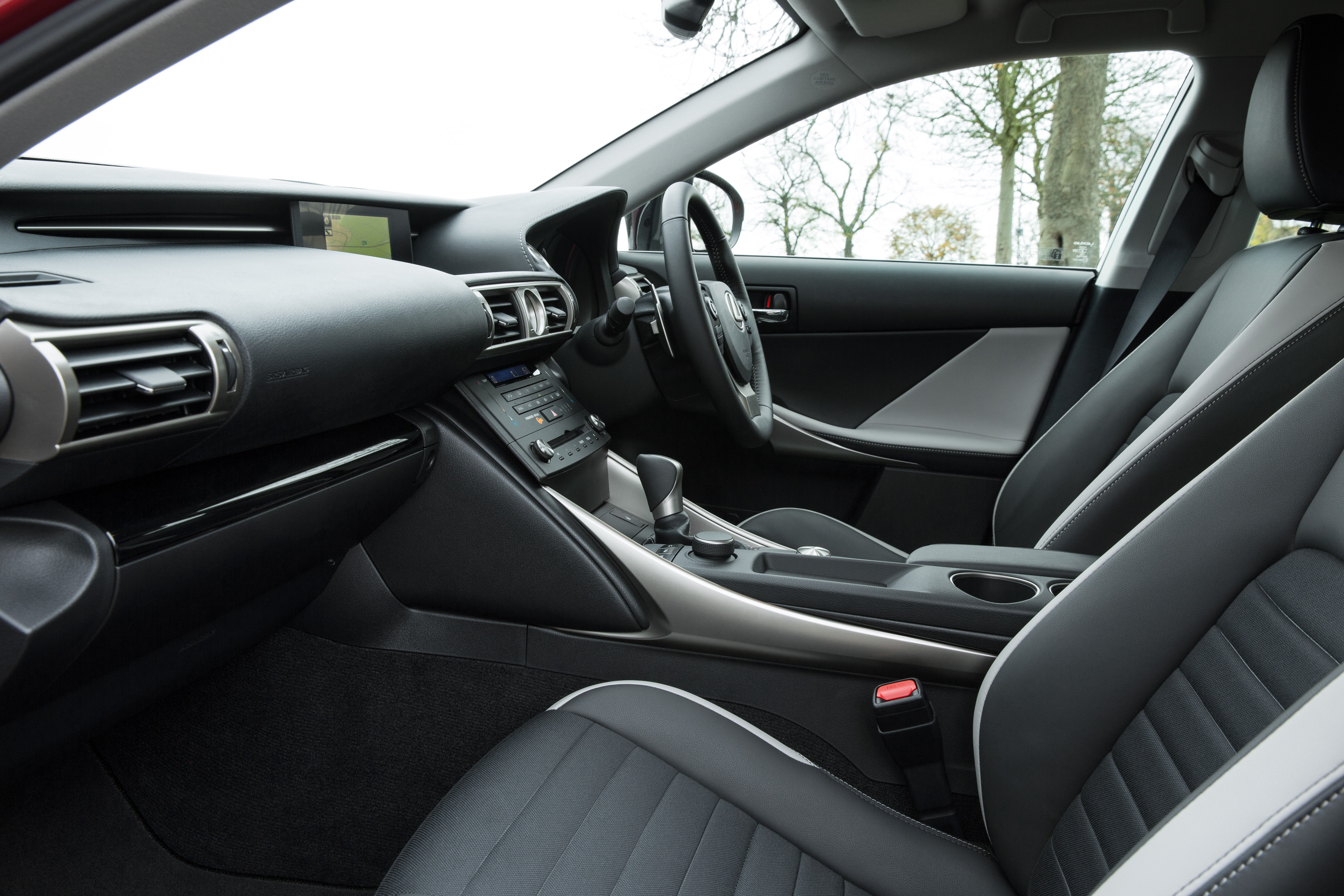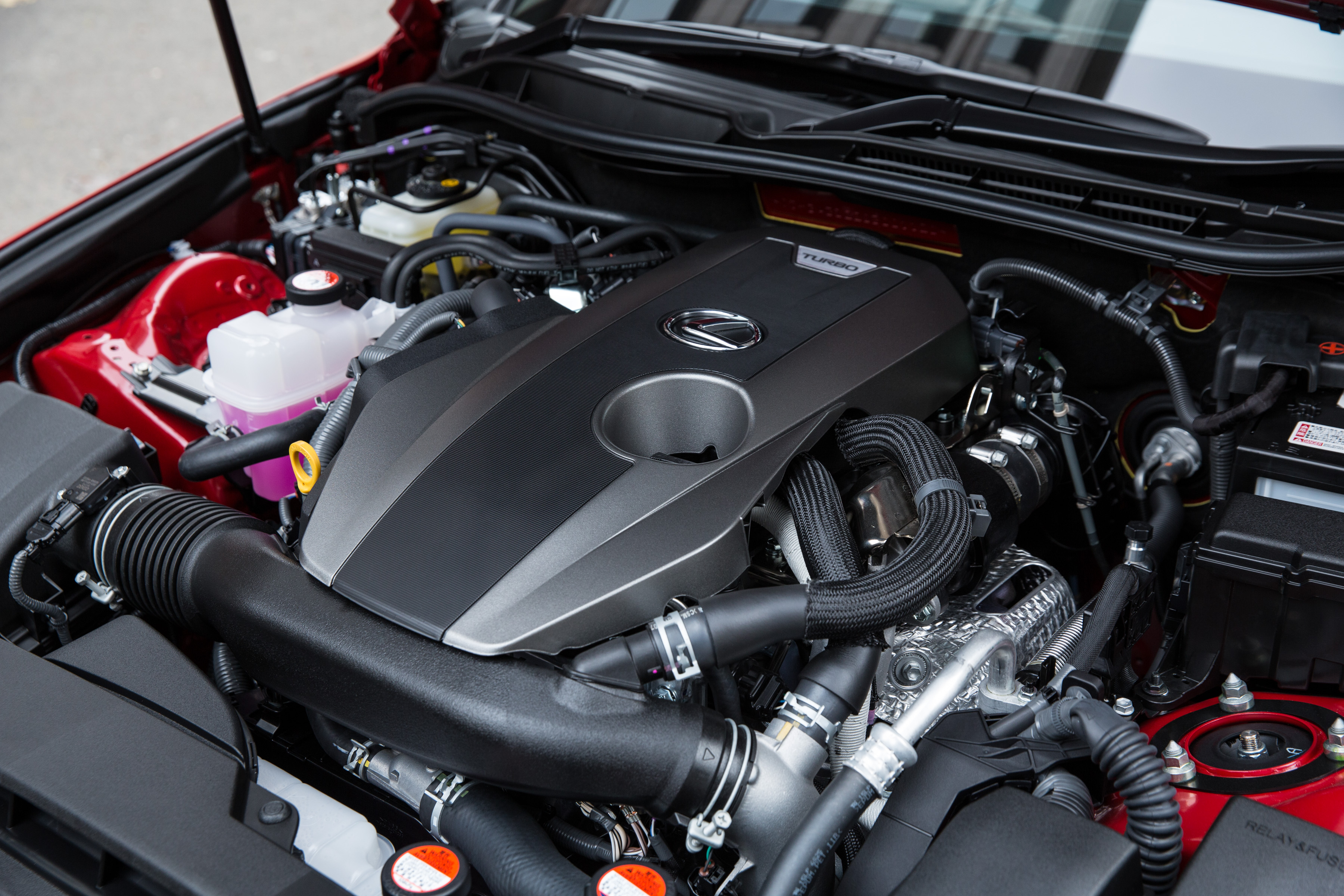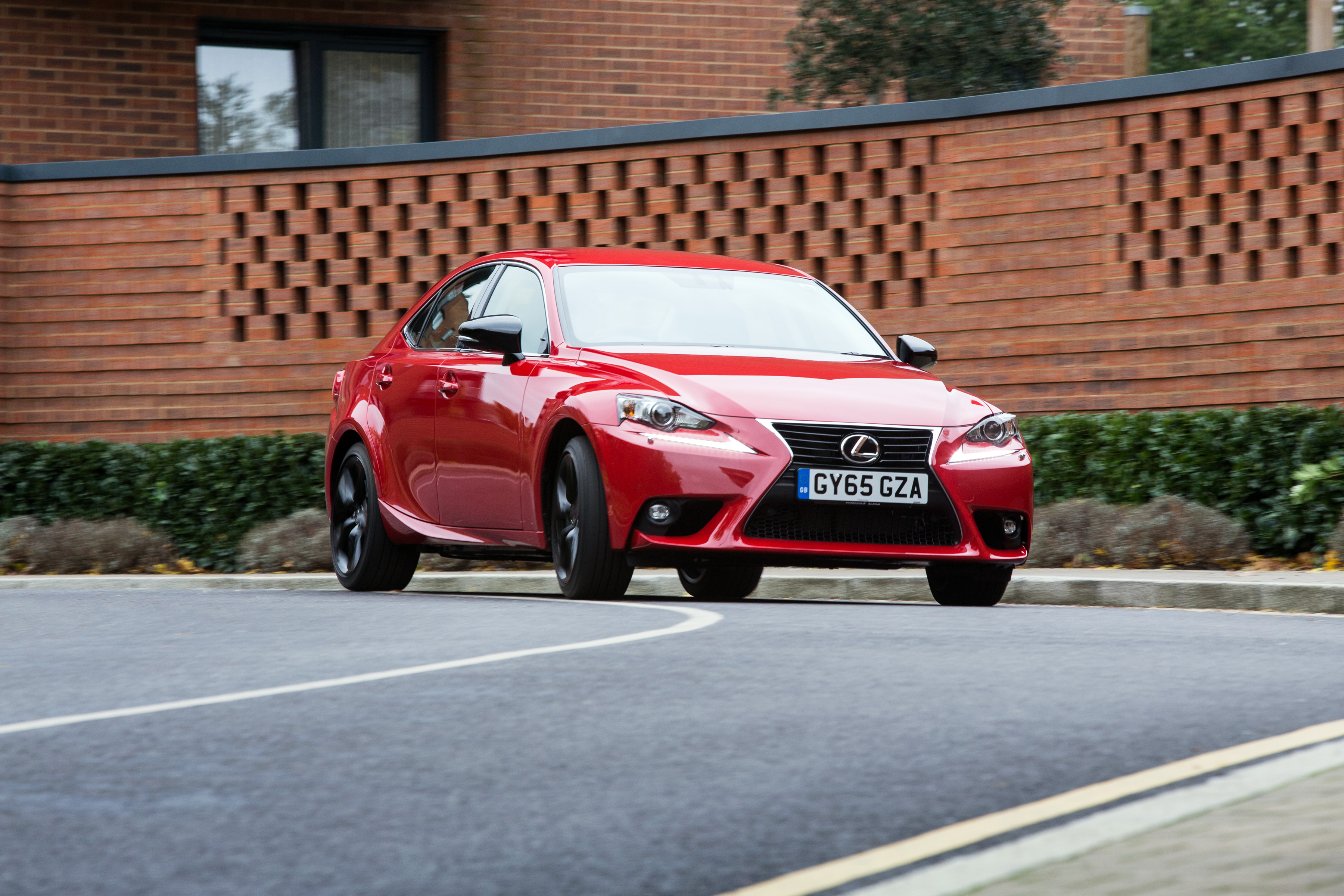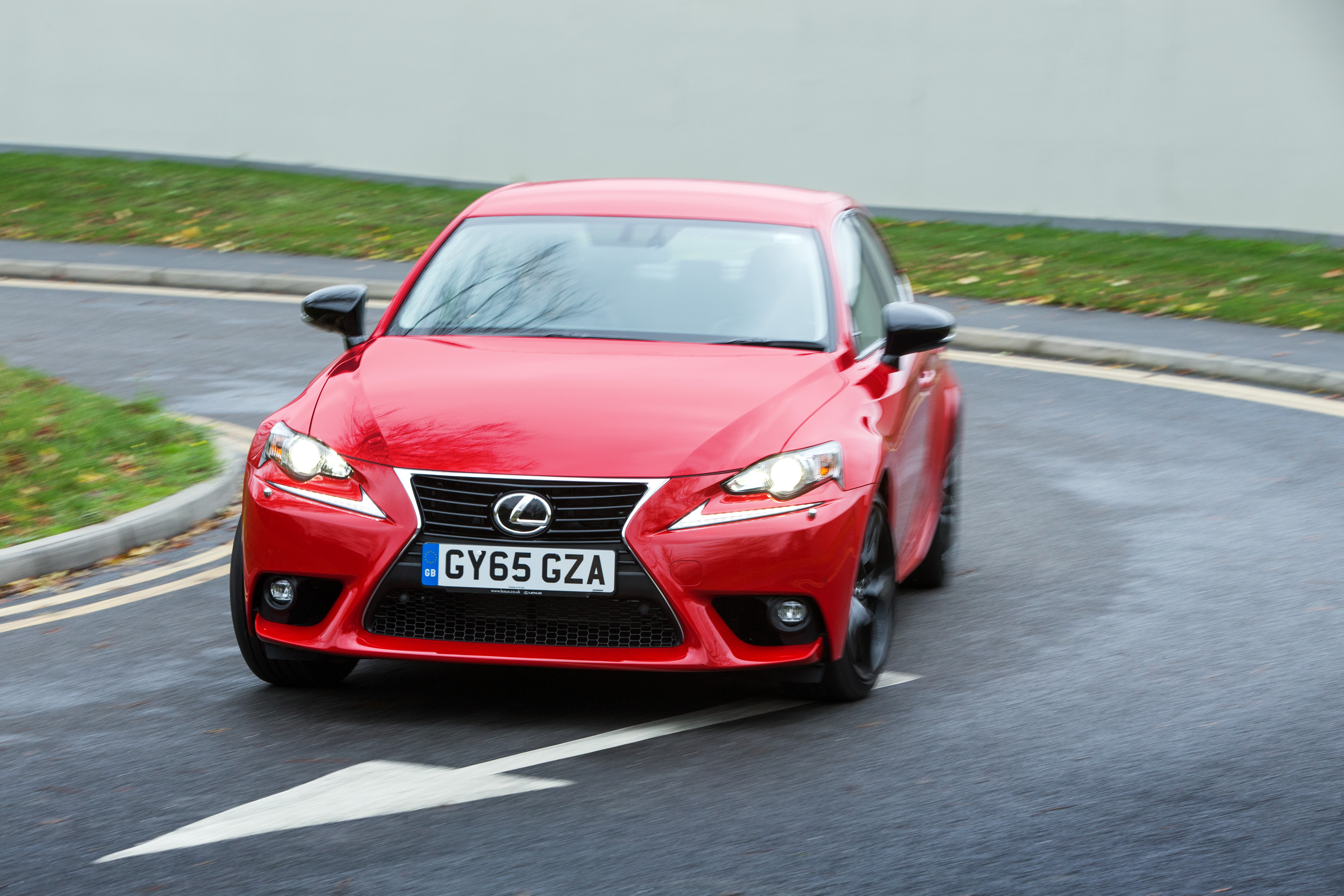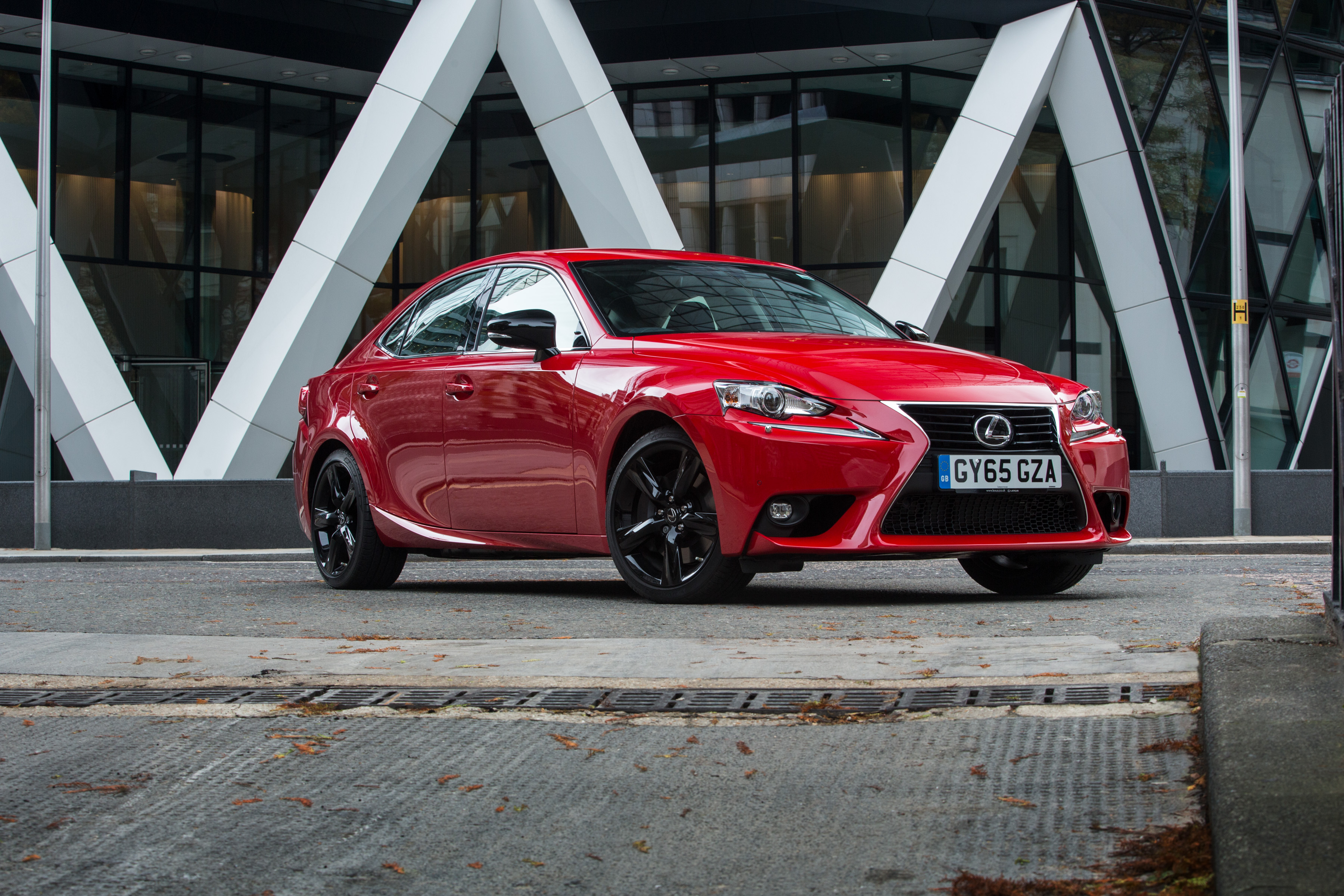Because of its low emissions and claimed high economy, its likely the hybrid Lexus IS300h will prove most appealing to buyers.
The petrol-only IS200t may be cheaper than the IS300h, but its turbocharged 242bhp 2.0-litre engine has allowed the Japanese luxury brand to close the gap on its closest downsized four-cylinder turbo petrols that now populate this class.
It’s smooth in operation, although lacking mid-range torque, and reassuringly familiar in some ways – but it would cost you almost twice as much on road tax than some rivals, and will probably consume a good 25 per cent more fuel than it should. Emissions are rated at 167g/km of CO2, while its average combined economy is an unimpressive 32.8mpg.
On paper, the IS300h couldn’t be more different. Powered by a 2.5-litre, 178bhp four-cylinder petrol engine mated to a 141bhp rear-mounted electric motor, it has a maximum ‘system output’ of 220bhp.
It emits half as much CO2 as its range-mate: as little as 99g/km in the case of the entry-level IS300h SE. And the hybrid's claimed combined economy figure of 65.7mpg is more than twice as good as that of the V6-engined alternative.
Objectively, you couldn’t accuse the IS300h of having dreary outright pace, in contrast to some Toyota hybrids. In our hands, it cracked 60mph from rest in 8.1sec.
The last Mercedes-Benz C 220 CDI saloon we figured took half a second longer and a BMW 320d is less than half a second quicker. So the IS300h finds itself in a competitive place for such a low-emitting executive saloon. Over a standing kilometre, it is actually a wee bit faster than even the BMW.
Which might suggest that there has been some revolution in the way that Toyota’s tried and tested Hybrid Synergy Drive transmission works. In practice, there hasn’t. Through 95 per cent of its travel, the accelerator pedal seems to lack proportional response and you need to use more of it than you expect to get the car to accelerate with any urgency.
That's fine, if all you want to do is waft around sedately and marvel at the remarkable, limo-like refinement of this car. Plenty will. But, as an Autocar reader, you probably won’t.
Meanwhile, the manual mode of the E-CVT just isn’t a match for a good torque converter auto in paddle-shift mode. It isn’t even close. Those gearchanges come slowly and with reluctance at times.
And when you’re using full throttle, the car overrides manual mode anyway. You can flip away to change the gear indicator on the instrument cluster, all the while having no effect on an engine spinning away at 6000rpm or a transmission funnelling that power to the road however it sees fit.
There may be no objective deficit on performance here to the cars that matter, and that’s quite remarkable in itself. But there’s still a big subjective problem, because the Lexus’s driver, while looked after very suavely at other times, is left mainly frustrated when he wants to interact with this car.
At that point, he’s still likely to find the car’s powertrain quite cold, remote and unsatisfying.


